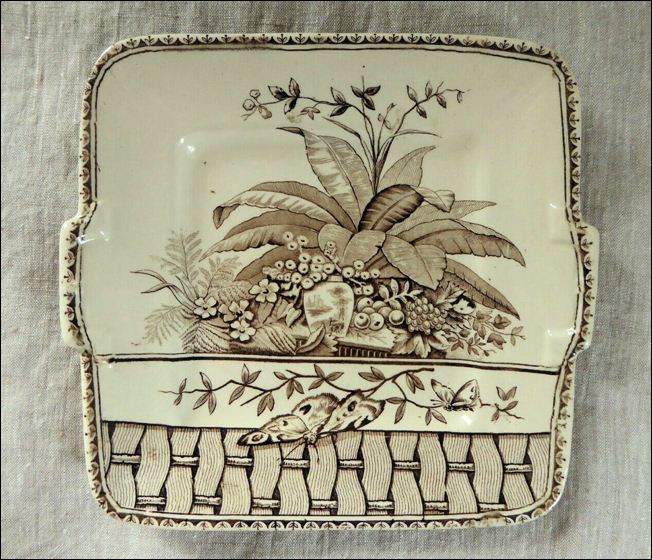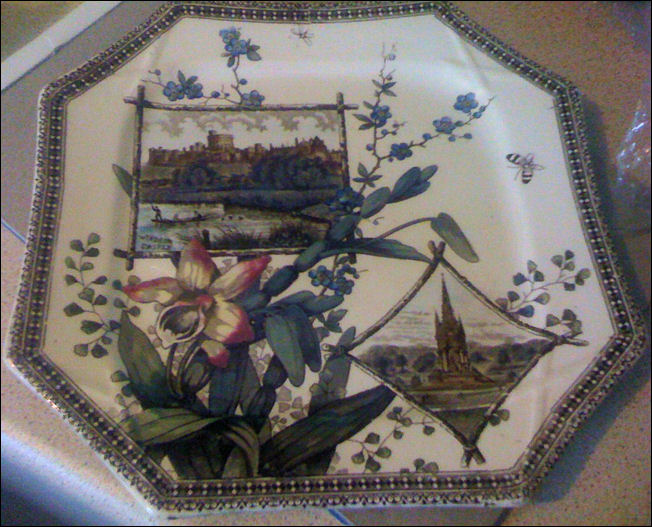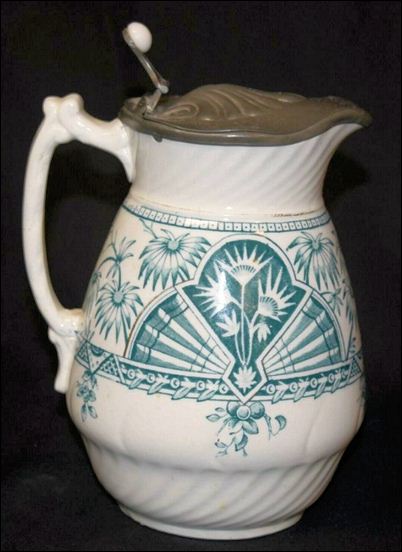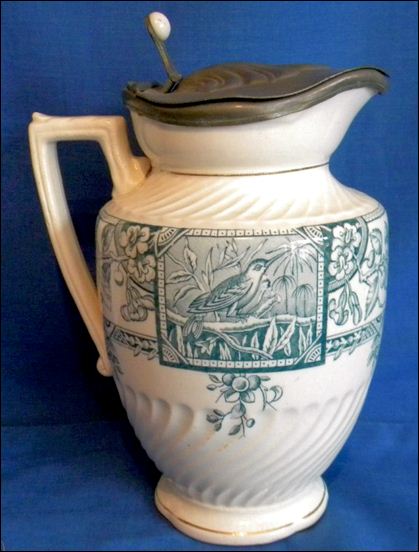| | thepotteries.org |
|
| ‘Aestheticism’ was a movement in the arts, literature and decorative arts that emphasised the ideal of beauty in art and society as an end in itself. The Aesthetes believed in beauty in art for its own sake and dismissed the idea that art should have a moral or utilitarian purpose. The aesthetic movement had its origins in the early 1870s and survived until about the turn of the century. In the United Kingdom it had its greatest impact in the visual arts and the pre-Raphaelite painter Dante Gabriel Rossetti was a leading figure in the movement. In literature, the writer and playwright Oscar Wilde is the best known aesthete,
in 1882 he visited Ontario, Canada and gave a lecture titled "The House
Beautiful". This lecture featured the early Aesthetic art movement, also known as the "Ornamental Aesthetic" art style, where local flora and fauna were celebrated as beautiful
and decorative. For a period aesthete symbols and themes appear on English pottery. Ceramics demonstrating aesthetic style tend to be decorated with Japanese-inspired motifs including sunflowers, chrysanthemums, magnolia, hawthorn blossom and the peacock. Simplicity and geometric shapes were often included. |

aesthetic movement brown
transfer serving dish in the Brazil pattern

one of the plates in THE WORLD
series
| The World - Wallis Gimson & Co. Influenced by the Aesthetic Movement, the patterns in this series reflect the period’s keen interest in nature and travel to exotic lands. Wallis Gimson's designs featured exotic blooming orchids and wildflowers mixed often with maiden hair fern fronds and butterflies. The central elements of the design are two cartouches each with a separate world-renowned city, building, architectural feature, or monument. This series of patterns was first registered on May 27, 1884, with production ending sometime prior to the close of the factory in 1890. |


transferware lidded jugs in the
aesthetic style
|
c. 1879-92 |
Edwin
James Drew Bodley
- design registered October 1879
"The spout, handle and edges are decorated with moulded bamboo stalks, with gilding to accentuate their nodes. Bright pink panels feature on two opposing sides, as well as on top. A Romanticism-inspired landscape painted with enamelled brushstrokes is visible at the front. The body of the teapot is unmistakably square. These striking aesthetic elements, are, of course, what make this particular object so interesting. |